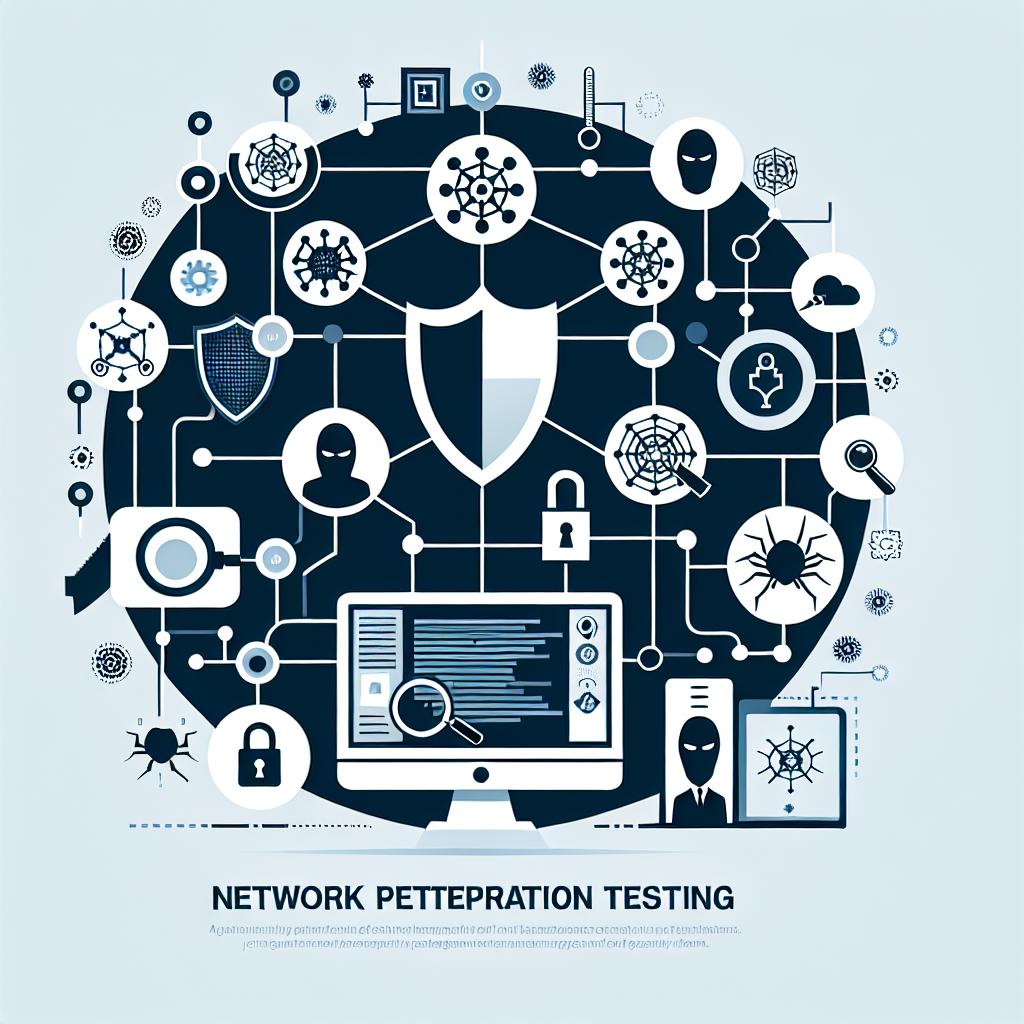Introduction to Network Penetration Testing
Network penetration testing, often referred to as pen testing, is a simulated cyber attack against your computer system to check for exploitable vulnerabilities. This process is crucial for organizations to understand their security posture and to identify weaknesses before malicious actors can exploit them. In this guide, we will explore the fundamentals of network penetration testing, its methodologies, tools, and best practices.
What is Network Penetration Testing?
Network penetration testing involves assessing the security of a network by simulating an attack from malicious outsiders (black hat hackers) and insiders (employees with malicious intent). The goal is to identify vulnerabilities in the network infrastructure, applications, and configurations that could be exploited to gain unauthorized access or cause damage.
Types of Penetration Testing
-
Black Box Testing: The tester has no prior knowledge of the network or system. This simulates an external attack where the attacker has to gather information without any insider knowledge.
-
White Box Testing: The tester has full knowledge of the network, including architecture, source code, and configurations. This approach allows for a more thorough examination of the system.
-
Gray Box Testing: This is a hybrid approach where the tester has partial knowledge of the system. It simulates an attack from a user with limited access, such as an employee.
The Penetration Testing Process
The penetration testing process can be broken down into several key phases:
1. Planning and Preparation
This initial phase involves defining the scope of the test, including the systems to be tested, the testing methods to be used, and the timeline. It’s essential to obtain proper authorization to avoid legal issues.
In this phase, the tester collects as much information as possible about the target network. This can include:
- Network Mapping: Identifying active devices, IP addresses, and services running on the network.
- OS Fingerprinting: Determining the operating systems in use.
- Service Enumeration: Identifying services and their versions running on the network.
3. Vulnerability Assessment
Once sufficient information is gathered, the tester conducts a vulnerability assessment to identify potential weaknesses. This can be done using automated tools or manual techniques. Common vulnerabilities include:
- Unpatched software
- Misconfigured firewalls
- Weak passwords
4. Exploitation
In this phase, the tester attempts to exploit identified vulnerabilities to gain unauthorized access to the network. This step is critical as it demonstrates the potential impact of the vulnerabilities.
5. Post-Exploitation
After gaining access, the tester assesses the extent of the compromise. This includes:
- Data Exfiltration: Attempting to access and extract sensitive data.
- Privilege Escalation: Trying to gain higher-level access within the network.
6. Reporting
The final phase involves documenting the findings in a comprehensive report. This report should include:
- An executive summary for stakeholders
- Detailed findings and evidence of vulnerabilities
- Recommendations for remediation
Several tools are widely used in network penetration testing, each serving different purposes:
- Nmap: A powerful network scanning tool used for network discovery and security auditing.
- Wireshark: A network protocol analyzer that captures and displays data packets in real-time.
- Metasploit: A penetration testing framework that allows testers to find and exploit vulnerabilities.
- Burp Suite: A web application security testing tool that helps identify vulnerabilities in web applications.
- Nessus: A vulnerability scanner that identifies vulnerabilities in systems and applications.
Best Practices for Network Penetration Testing
-
Define Clear Objectives: Establish what you want to achieve with the penetration test, whether it’s compliance, risk assessment, or vulnerability identification.
-
Engage Qualified Professionals: Ensure that the penetration testing team has the necessary skills and certifications, such as Certified Ethical Hacker (CEH) or Offensive Security Certified Professional (OSCP).
-
Regular Testing: Conduct penetration tests regularly, especially after significant changes to the network or systems.
-
Remediation Follow-Up: After the test, prioritize and address the identified vulnerabilities promptly.
-
Maintain Documentation: Keep detailed records of the testing process, findings, and remediation efforts for future reference and compliance.
Conclusion
Network penetration testing is an essential component of a robust cybersecurity strategy. By simulating real-world attacks, organizations can identify vulnerabilities and strengthen their defenses against potential threats. Following a structured approach and employing the right tools and practices will help ensure that your network remains secure in an ever-evolving threat landscape.



